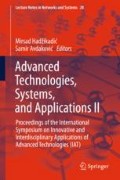Abstract
Recently research on Human Activity Recognition (HAR) has been reported on systems showing good overall recognition performance. A machine learning based HAR classifier was proposed in several experimental setups. A public domain dataset comprising 165,633 samples was used for this purpose. Models of machine learning algorithms are built up using Azure Machine Learning studio. Based on the mentioned dataset, and previous work we have done 5 experiments. First, we have done experiments for classifying suitable algorithms for further experiments. Other experiment is trained on male data, tested on female data and vice versa. Than, we separated each subject from whole dataset. Each of them was used as a test model while other 3 subjects were in train model. In the last experiment each subject data is trained and tested separately. It achieved the highest overall performance. Currently, it is not possible to build subject-independent method for posture activity detection.
Access this chapter
Tax calculation will be finalised at checkout
Purchases are for personal use only
References
Bao, L., Intille, S.S.: Activity recognition from user-annotated acceleration data. Pervasive (2004)
He, Z.-Y., Jin, L.-W.: Activity recognition from acceleration data using ar model representation and svm. In: International Conference on Machine Learning and Cybernetics (2008)
He, Z., Liu, Z., Jin, L., Zhen, L.-X., Huang, J.-C.: Weightlessness feature; a novel feature for single tri-axial accelerometer based activity recognition. In: 19th International Conference on Pattern Recognition (2008)
Chen, Y.-P., Yang, J.-Y., Liou, S.-N., Lee, G.-Y., Wang, J.-S.: Online classifier construction algorithm for human activity detection using a tri-axial accelerometer. Appl. Math. Comput. (2008)
Breiman, L., Friedman, J., Olshen, R., Stone, C.: Classification and Regression Trees. Wadsworth, Belmont CA (1984)
Amit, Y., Geman, D.: Randomized inquiries about shape; an application to handwritten digit recognition. Technical Report 401. University of Chicago, Dept. of Statistics (1994)
Shotton, J., Sharp, T., Kohli, P., Nowozin, S., Winn, J., Criminisi, A.: Decision jungles: compact and rich models for classification, Microsoft Research
Rifkin, R., Klautau, A.: Parallel networks that learn to pronounce. J. Mach. Learn. Res. 101–141 (2004)
Allwein, E., Shapire, R., Singer, Y.: Reducing multiclass to binary: A unifying approach for margin classifiers. J. Mach. Learn. Res. 113–141 (2000)
Hsu, C.-W., Lin, C.-J.: A comparison of methods for multiclass support vector machines. In IEEE Trans. Neural Netw. 415–425 (2002)
Barnes, J.: Microsoft Azure Essentials: Azure Machine Learning. Microsoft Press (2015)
Ugulino, W., Cardador, D., Vega, K., Velloso, E., Milidiu, R., Fuks, H.: Wearable computing: accelerometers’ data classification of body postures and movements. In: 2012 Proceedings of 21st Brazilian Symposium on Artificial Intelligence. Advances in Artificial Intelligence–SBIA 2012
Author information
Authors and Affiliations
Corresponding author
Editor information
Editors and Affiliations
Rights and permissions
Copyright information
© 2018 Springer International Publishing AG
About this paper
Cite this paper
Čurić, M., Kevrić, J. (2018). Posture Activity Prediction Using Microsoft Azure. In: Hadžikadić, M., Avdaković, S. (eds) Advanced Technologies, Systems, and Applications II. IAT 2017. Lecture Notes in Networks and Systems, vol 28. Springer, Cham. https://doi.org/10.1007/978-3-319-71321-2_28
Download citation
DOI: https://doi.org/10.1007/978-3-319-71321-2_28
Published:
Publisher Name: Springer, Cham
Print ISBN: 978-3-319-71320-5
Online ISBN: 978-3-319-71321-2
eBook Packages: EngineeringEngineering (R0)

